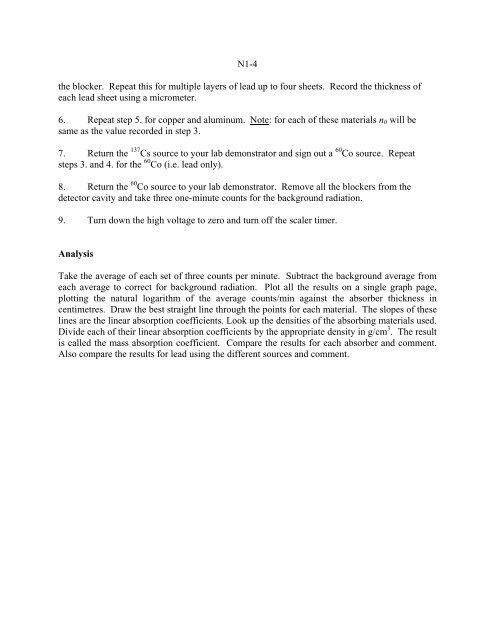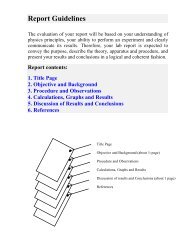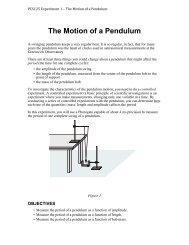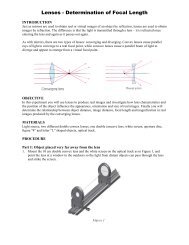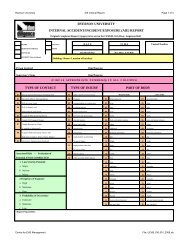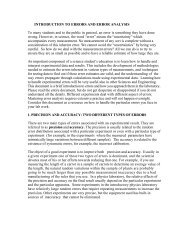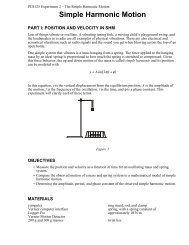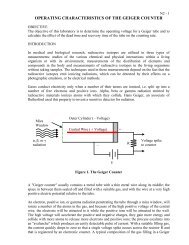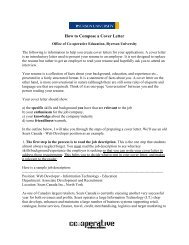Absorption of Gamma Rays - Ryerson Department of Physics
Absorption of Gamma Rays - Ryerson Department of Physics
Absorption of Gamma Rays - Ryerson Department of Physics
Create successful ePaper yourself
Turn your PDF publications into a flip-book with our unique Google optimized e-Paper software.
N1-4the blocker. Repeat this for multiple layers <strong>of</strong> lead up to four sheets. Record the thickness <strong>of</strong>each lead sheet using a micrometer.6. Repeat step 5. for copper and aluminum. Note: for each <strong>of</strong> these materials n 0 will besame as the value recorded in step 3.7. Return the 137 Cs source to your lab demonstrator and sign out a 60 Co source. Repeatsteps 3. and 4. for the 60 Co (i.e. lead only).8. Return the 60 Co source to your lab demonstrator. Remove all the blockers from thedetector cavity and take three one-minute counts for the background radiation.9. Turn down the high voltage to zero and turn <strong>of</strong>f the scaler timer.AnalysisTake the average <strong>of</strong> each set <strong>of</strong> three counts per minute. Subtract the background average fromeach average to correct for background radiation. Plot all the results on a single graph page,plotting the natural logarithm <strong>of</strong> the average counts/min against the absorber thickness incentimetres. Draw the best straight line through the points for each material. The slopes <strong>of</strong> theselines are the linear absorption coefficients. Look up the densities <strong>of</strong> the absorbing materials used.Divide each <strong>of</strong> their linear absorption coefficients by the appropriate density in g/cm 3 . The resultis called the mass absorption coefficient. Compare the results for each absorber and comment.Also compare the results for lead using the different sources and comment.


